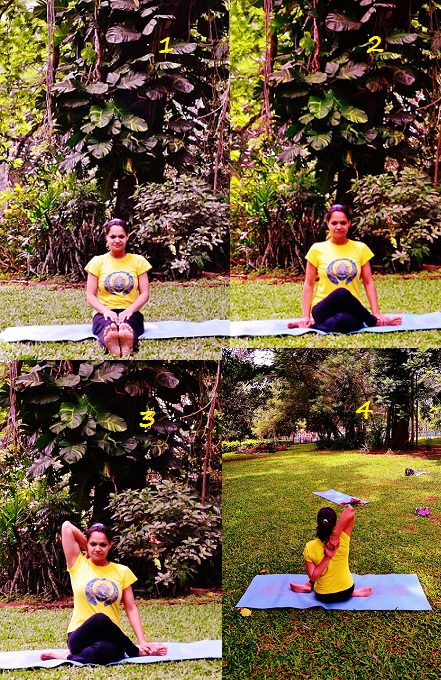Earlier this year I went to the Jaipur Lit Fest and go the chance to attend many sessions/talks about yoga. These ranged from early yogis to the practice of yoga to where we’re headed with yoga. There was one professor David Gordon White who spoke about early yoginis who were mystical beings and had magical powers. That stayed with me and I recently thought of it again. I’m currently reading ‘Light on the Yoga Sutras of Patanjali’ by BKS Iyengar. It is a translation with explanations of all of the 198 aphorisms of Patanjali. In the third chapter of the Yoga Sutras, Patanjali lists down the powers that a yogi can acquire should s/he practice yoga in the right way and walk the yogic path in the right manner. He calls these the ‘vibhutis’ (properties) of yoga. These are:
- He begins to know the past and future.
- He understands the language of all people, birds and animals.
- He knows his past and future lives.
- He reads the minds of others.
- If necessary, he can define even the precise details of what is in the minds of others.
- He becomes invisible at will.
- He can arrest the senses: hearing, touch, sight, taste and smell.
- He knows the exact time of his death by intuition or through omens.
- He is friendly and compassionate to all.
- He becomes strong as an elephant and his movements are as graceful as a peacock.
- He clearly sees objects near and far, gross and fine, and concealed.
- He knows the working of the solar system.
- He knows the functions of the lunar system and through that, the position of the galaxies.
- He reads the movements of stars from the pole star and predicts world events.
- He knows his body and its orderly functions.
- He conquers hunger and thirst.
- He makes his body and mind immobile like a tortoise.
- He has visions of perfected beings, teachers and masters.
- He has the power to perceive anything and everything.
- He becomes aware of the properties of consciousness.
- By knowing the properties of consciousness he uses consciousness to light the lamp of the soul.
- Divine faculties which are beyond the range of ordinary senses comes to him because of his enlightened soul.
- He leaves his body consciously and enters others’ bodies at will.
- He walks over water, swamp and thorns.
- He creates fire at will.
- He hears distant sounds.
- He levitates.
- He frees himself from afflictions at will and often lives without a body.
- He controls nature’s constituents, qualities and purposes.
- He becomes lord of the elements and their counterparts.
- He possesses an excellent body with grace, strength, perfect complexion and lustre.
- He has perfect control over his senses and mind, and their contact with the lower self or the ‘I’ consciousness.
- He transforms body, senses, mind, intelligence and consciousness to utmost sharpness and speed in tune with his very soul.
- He gains dominion over all creation and all knowledge.
I asked my Iyengar teacher whether he had ever come across anyone (even Iyengar himself) who had experienced any of these vibhutis. Because I’m no where near experiencing a single one of them. His answer was cryptic. He said the Sutras were written 5000 years ago, and you must interpret them in terms of the world today. Hmm….(I thought trying to look intelligent.) He also told me to read other people’s interpretation of the Sutras and mabye even write to Iyengar about my doubts.
I’ve been mulling over this for the past couple of days and I’ve started to think that perhaps when you practice yoga and increase your level of awareness then your intuition also starts to sharpen and perhaps you’re able to feel and sense more around your environment. Perhaps all the vibhutis Patanjali has listed are a result of powerful intuition.
I’m going to take my teacher’s advice and read up some more interpretations of the Sutras, but I do wonder if there’s some delightful magic in store for us yogis 🙂












